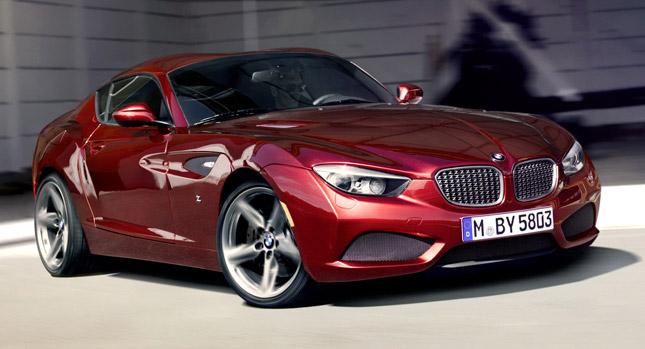From the late 1990s, BMW has been producing coupe versions of its Z series roadsters, namely the Z3 Coupe and the first generation of the Z4, both of which adopted a “love or loathe it but you cannot ignore it” kind of styling.
By replacing the soft-top with a retractable hardtop on the second-generation Z4 roadster, many assumed that the move would mean the end of the coupe model.
Today, however, BMW presented a new study for a Z4 Coupe designed by famed Italian studio Zagato in advance of its world premiere at the upcoming Concorso d’Eleganza Villa d’Este in Italy.
 The Italian firm’s vision of a Z4 Coupe embodies traditional Zagato styling traits such as the double bubble roof and the classic Kamm Tail. But there is more to the Zagato Coupe as virtually every panel of the Z4 roadster has been redesigned.
The Italian firm’s vision of a Z4 Coupe embodies traditional Zagato styling traits such as the double bubble roof and the classic Kamm Tail. But there is more to the Zagato Coupe as virtually every panel of the Z4 roadster has been redesigned.
Among other highlights that stand out are the countless small matt Zagato “z” letters that make up the double kidney grille, an elongated bonnet with air scoops and more muscular rear fenders.
“For me, the BMW Zagato Coupé holds a very special magic. It exudes a certain spontaneity which, when combined with the type of unconventional solutions typical of Zagato, lend the car a very individual elegance,” says Zagato chief designer Norihiko Harada.
The interior was more or less left in stock form aside from model-specific trim and colors.
So is the Zagato Coupe a pure concept or does BMW have a production model in mind? Well, hard to say because BMW avoided using either term in its official press statement.
For starters, BMW does not use the word ‘concept’ simply referring to the car as the Zagato Coupé. Furthermore, BMW and Zagato state that this is not a static study but a fully functional model that is registered for road use and meets all the legal requirements worldwide. The car has even been driven at high speeds during testing on the BMW test track.
“Zagato has always provided its customers with ready-to-drive cars which can be sent into action on the road or race track without further ado – and the BMW Zagato Coupé fits the same template,” says Dr Andrea Zagato.
He continues: “It is relatively easy to build a design study which is not intended for use on the road. Not having to meet any stipulations governing crash safety or pedestrian protection opens up a host of new avenues in terms of design. The challenge lies in injecting the emotional appeal of a concept car into a road-legal machine. And we think we have succeeded in doing just that with the BMW Zagato Coupé.”
Taking everything in consideration, and until BMW clarifies its intentions, we could say that the Bavarian company could be looking for feedback before it makes any decision on the production of the Zagato Coupe. That said, what do you think: should BMW build the Zagato Coupe? Tell what you think in the comments section below.
PHOTO GALLERY























































































